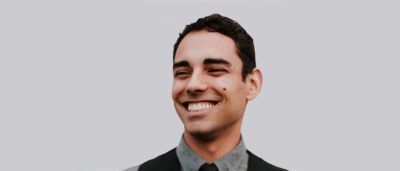Benjamin Hasson is the Art Director at The Texas Tribune.
What led you to start working in digital/media publishing?
While pursuing my design degree at The University of Texas at Austin, I landed an internship at a creative production house as a front-end web designer. I learned to code, design, and skin websites on various CMS platforms. A mentor from this company contacted me soon after graduation with the opportunity to come work for a digital news startup called The Texas Tribune. Seven years later, I’m now the art director.
What does a typical day look like for you?
Everything that reaches the public eye comes through our team before it goes live. On any given day, I could be deep in the middle of a homepage redesign or jumping in to knock out an urgent project for any part of the organization. I like going back and forth between the big picture, and the minute details while collaborating with my colleagues along the way.
What’s your work setup look like? (your apps, productivity tools, etc.)
I’m on a 27″ Retina iMac, and sometimes I’ll use a Wacom tablet for drawing. Adobe, Basecamp, Dropbox, Sublime Text, and Photoshelter are must-haves, in addition to Slack for communication and Google for presentations and sharing data.
One of the most useful apps I use daily is Flycut. It keeps a list of items in your clipboard handy so you can toggle back and forth between copied text or objects.
Little Ipsum is also a nice app that lets me easily paste in sample text for mockups.
What do you to get inspired?
I love to travel to new cities and just walk around. I like to document the type, art, and architecture I see along the way. I’ll often revisit my collection of design books for inspiration. I love futuristic Sci-fi films, they help me get in the headspace of what could be. Sometimes a jog and a good podcast will spark something too.
Working with the client and helping them interpret and execute their vision is what makes design truly exciting for me and what ultimately drives my inspiration
What’s your favorite piece of writing or quote?
Most recently, I was really moved by Ta-Nehisi Coates’ “Between the World and Me.” It was so powerfully written, both as a letter to his son and to all Americans.
What is the most interesting/innovative thing you have seen on another outlet other than your own?
There are so many great projects or moments in projects that have left an impression on me, so I’ll share three. The first of these is Frontline’s “Inheritance” by Ken Dornstein, an interactive story that unfolds as you explore the possessions that Dornstein has collected of his brother David, who was killed in a plane bombing. It’s not only a moving experience as a piece of journalism, but a tremendous feat of “user experience.” The whole delivery is effortless.
Another piece I really enjoyed was a video by The Washington Post called “Meet the rural Americans who fear they’re being forgotten.” After the 2016 elections, there was this realization that much of the national press was living in a bubble and needed to reconnect with neighboring communities. But what does that mean in real terms? This video is a great example of this effort done well.
Lastly, is a piece by Luke Malone, with artwork by Simon Prades, called “You’re 16. You’re a Pedophile. You Don’t Want to Hurt Anyone. What Do You Do Now?” I love editorial illustrations and this is full of brilliant renditions, some of which are also animated loops. I was blown away by the use of light and double exposure. It’s both technically and conceptually difficult to get a looping animation to work on so many levels without feeling too repetitive.
Content from our partners
What is the problem that you’re passionately tackling at the moment?
We just launched our homepage redesign and are now fine-tuning it. For this year, we’re moving our landmark festival to downtown Austin. It’s a huge opportunity to rethink the look and feel as well as the attendee experience from the ground up.
Do you have any advice for ambitious digital publishing and media professionals who are just starting out?
Learn to articulate your vision so others can help you get there and know that presentation can make all the difference.












